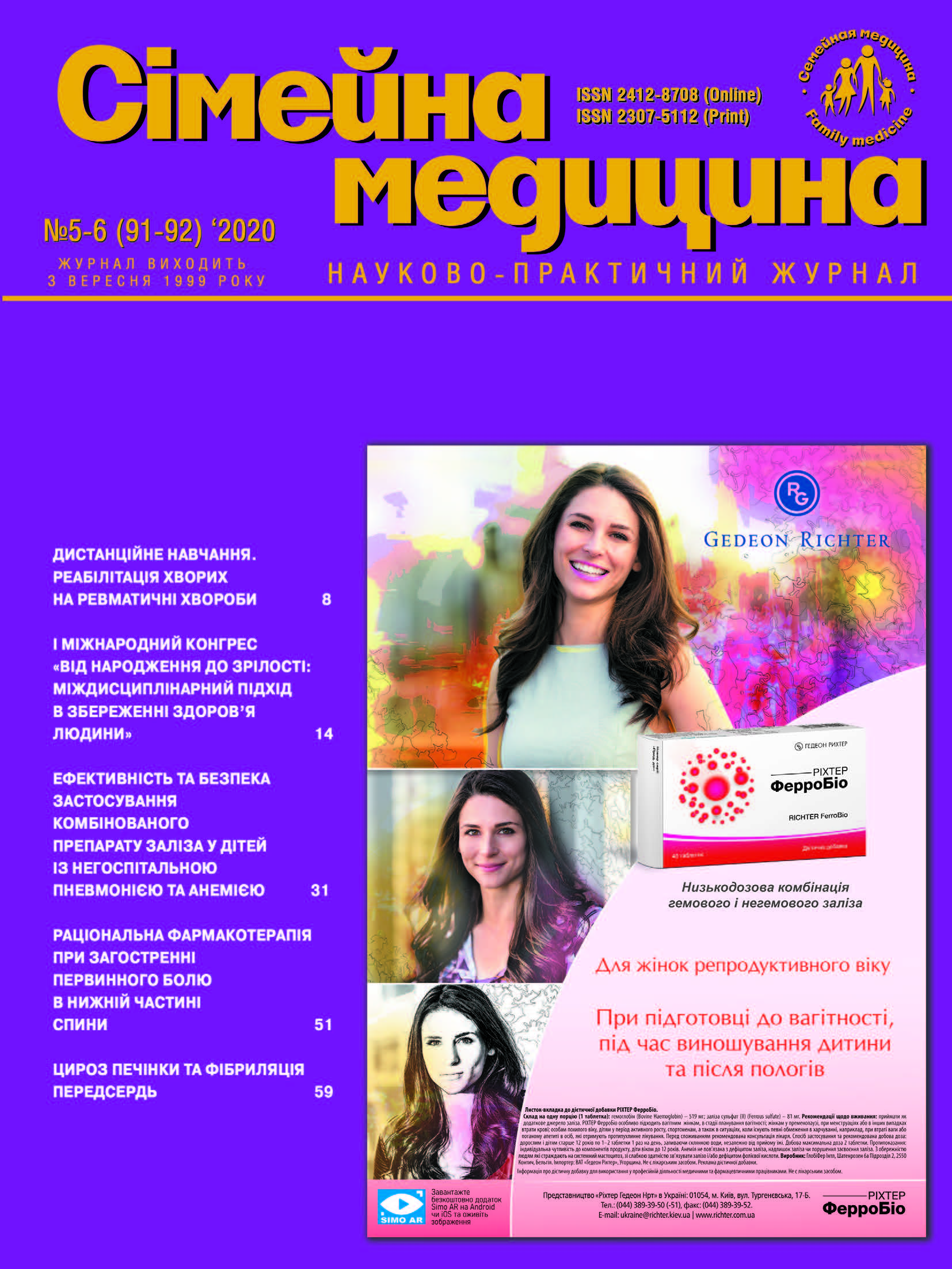Thyroid Lesion as a Manifestation of Comorbidity in Patients with Diabetic Polyneyropathy
##plugins.themes.bootstrap3.article.main##
Abstract
The study of clinical and anamnestic and paraclinical characteristics, highlighting their dominant features in patients with DP and existing thyroid diseases occupies an important place in modern neuroendocrinology and requires more focused attention of clinicians.
The objective: to determine the leading clinical and laboratory-instrumental parameters in patients with DP and thyroid pathology, to analyze the mutual influence of neuroendocrine pathology on the patient’s somatoneurological condition.
Materials and methods. Was done a clinical examination of 64 patients with DP , in 27 (42 %) of them was diagnosed the comorbid thyroid pathology, in 37 (58 %) it was absent. All patients were divided into two groups: with DP in the background of type I, II DM and thyroid pathology (A) and with DP in the background of type I, II DM without thyroid pathology (B). During the examination of patients were used clinical-anamnestic, clinical-neurological, laboratory-instrumental, neurophysiological methods of examination. Pain characteristics were assessed using the McGill Pain Questionnaire (MPQ). Statistic calculation was done in MS Excel 2003 and using the package for statistical analysis STATISTICA 10.
Results. In patients of both groups comorbidly were dominated diseases of the cardiovascular system, in group A, increasingly was revealed gastrointestinal pathology. Polyneuritic disorders of sensitivity and autonomic-trophic disorders are more common in persons of group B, they have a higher frequency of comorbid pathology and longer duration of DM. In group A lack of Achilles and knee reflexes was recorded more often than in comparison group. In 18 (65 %) of the examined persons of group A was detected a fatty liver dystrophy by ultrasound scanning of the abdominal organs, which exceeds the number in group B – 13 (35 %). There is an inverse average dependence between the level of TSH and BMI (correlation coefficient = –0,65). The general index of pain rating (Pain Rating Index – PRI) in group A is higher (30,62±2,64 scores).
Conclusions. Among the thyroid diseases in the examined patients of group A hypothyroidism was most often detected, so 30 % of patients had a pronounced violation of lipid metabolism in the form of obesity, besides, in this group the number of people with type II DM was prevailed. The influence of thyroid pathology on the manifestations of DP is reflected in the intensification of neuropathic pain syndrome. There is also a significant effect on the metabolism of fats and carbohydrates, which aggravate and sometimes deepen the somatic condition of the patient.
##plugins.themes.bootstrap3.article.details##

This work is licensed under a Creative Commons Attribution 4.0 International License.
Authors retain the copyright and grant the journal the first publication of original scientific articles under the Creative Commons Attribution 4.0 International License, which allows others to distribute work with acknowledgment of authorship and first publication in this journal.
References
Pankiv V.I. Korektsiya funktsionalnogo stanu pechinky v patsientiv z avtoimunnymy zakhvoruvannyamy shchytopodibnoi zalozy [Correction of liver functional state in patients with autoimmune diseases] // International Endocrinological Journаl. – 2018. – Т. 14, № 5. – P. 499–502. Ukrainian.
Feysa S.V. Patologiya shchytopodibnoi zalozy ta nealkogolna zhyrova khvoroba pechinky [Pathology of the thyroid gland and non-alcoholic fatty liver disease] // Ukraine. Health of the Nation. – 2016. – № 1–2. – P. 198–202. Ukrainian.
Bartalena L., Cossu E., Grasso L. et al. Relationship between nocturnal serum thyrotropin peak and metabolic control in diabetic patients // J. Clin. Endocrinol. Metab. – 1993. – 76. – 983–987.
Beylot M. Regulation of in vivo ketogenesis: role of free fatty acids and control by epinephrine, thyroid hormones, insulin and glucagon // Diabetes metabolism. – Оct 1996. – 22 (5). – 299–304.
Fenichel G.M. Clinical pediatric neurology: a signs and symptoms approach. 4th ed. Philadelphia: W.B. Saunders; 2001.
Lambadiari V., Mitrou P., Maratou E. [et al.]. Thyroid hormones are positively associated with insulin resistance early in the development of type 2 diabetes// Endocrine. – 2010. – Vol. 37. – P. 28–32.
Mitrou P. Insulin action in hyperthyroidism: a focus on muscle and adipose tissue / P. Mitrou, S.A. Raptis, G. Dimitriadis // Endocr. Rew. – 2010. – Vol. 31. – P. 663–679.
Vanderpump M.P., Tunbridge W.M., French J.M. et al. The incidence of thyroid disorders in the community: a twenty-year follow-up of Whickham Survey // Clin. Endocrinol. – 1995. – 43. – 55–68.
Villano M.J., Huber A.K., Greenberg D.A. et al. Autoimmune thyroiditis and diabetes: dissecting the joint genetic susceptibility in a large cohort of multiplex families // Journal of Clinical Endocrinology and Metabolism. – 2009. – 94. – 1458–1466.





